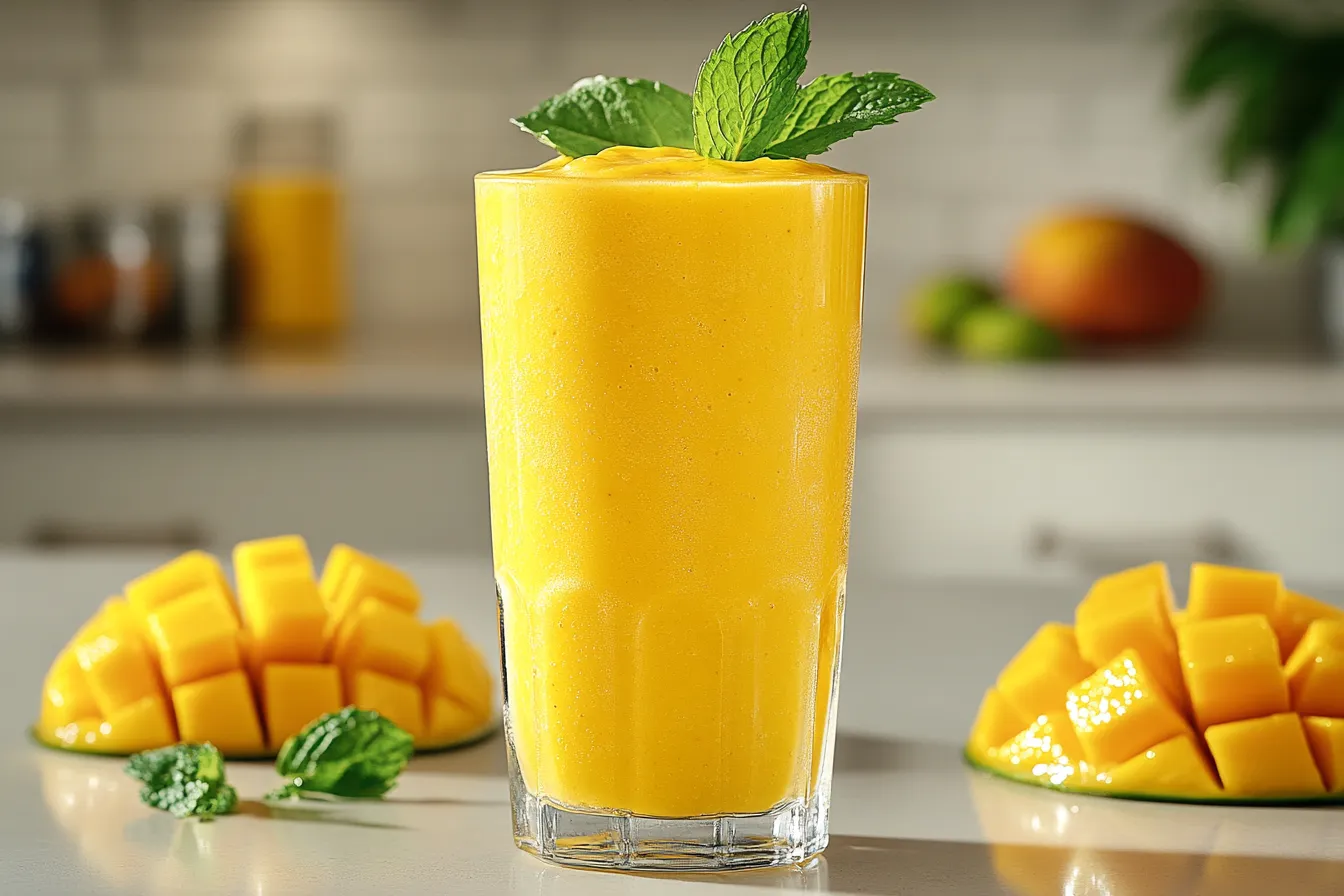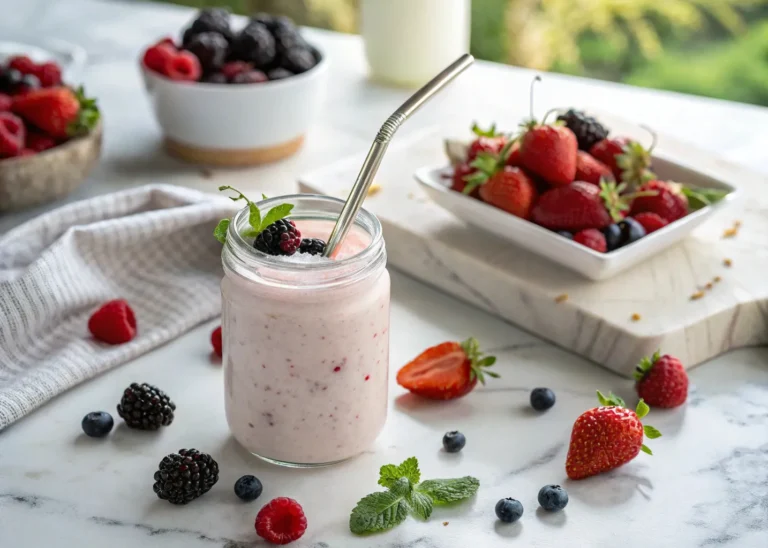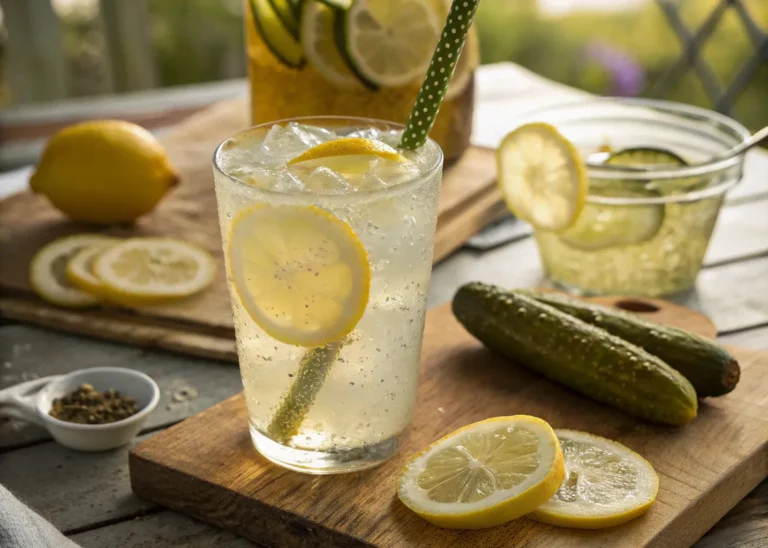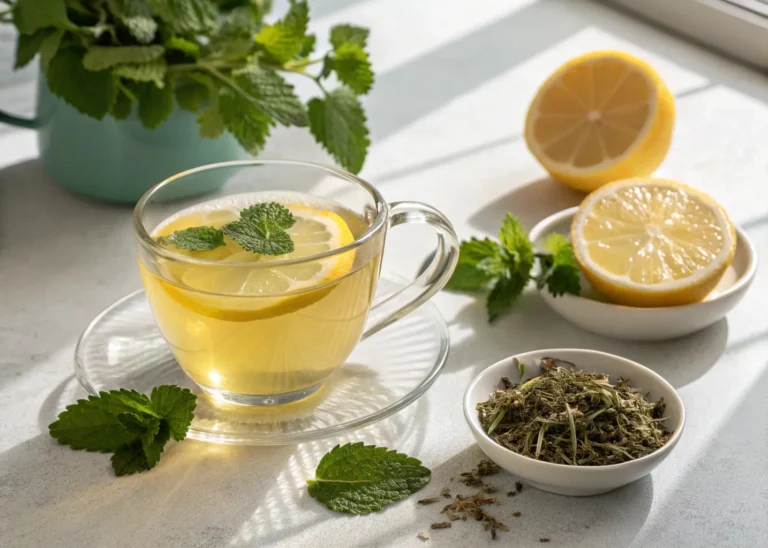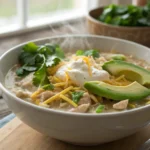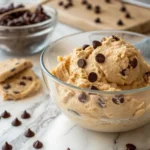When the weather heats up or you’re craving something sweet yet wholesome, nothing beats a creamy, golden mango smoothie recipe. Bursting with tropical flavor, this drink is a blend of ripe mangoes, a silky base, and just the right amount of sweetness — perfect for breakfast, a mid-day refresher, or even dessert. In this guide, we’ll cover everything from the best mango varieties to use, to pairing fruits that enhance the flavor, plus expert tips to get that irresistibly smooth texture every time.
If you’re looking for more fruity inspiration, check out the refreshing Greek Yogurt Smoothie that pairs beautifully with mango.
Why This Mango Smoothie Recipe is a Must-Try
The perfect tropical drink for breakfast, snacks, or dessert
A mango smoothie is more than just a drink — it’s a glass of sunshine. The natural sweetness of mango eliminates the need for refined sugar, making it a guilt-free treat you can enjoy morning, noon, or night. Whether you sip it on a hot summer day or serve it as a light dessert after dinner, this smoothie brings a burst of tropical goodness in every sip.
How a mango smoothie fits into a balanced, healthy lifestyle
Mangoes are rich in vitamin C, vitamin A, potassium, and antioxidants — nutrients that support immunity, skin health, and overall well-being. Blending them into a smoothie gives you a quick, portable way to fuel your body without heavy processing or artificial ingredients. With the right liquid base and thoughtful fruit pairings, your smoothie can be as nourishing as it is delicious.
Must-Have Ingredients for a Perfect Mango Smoothie recipe
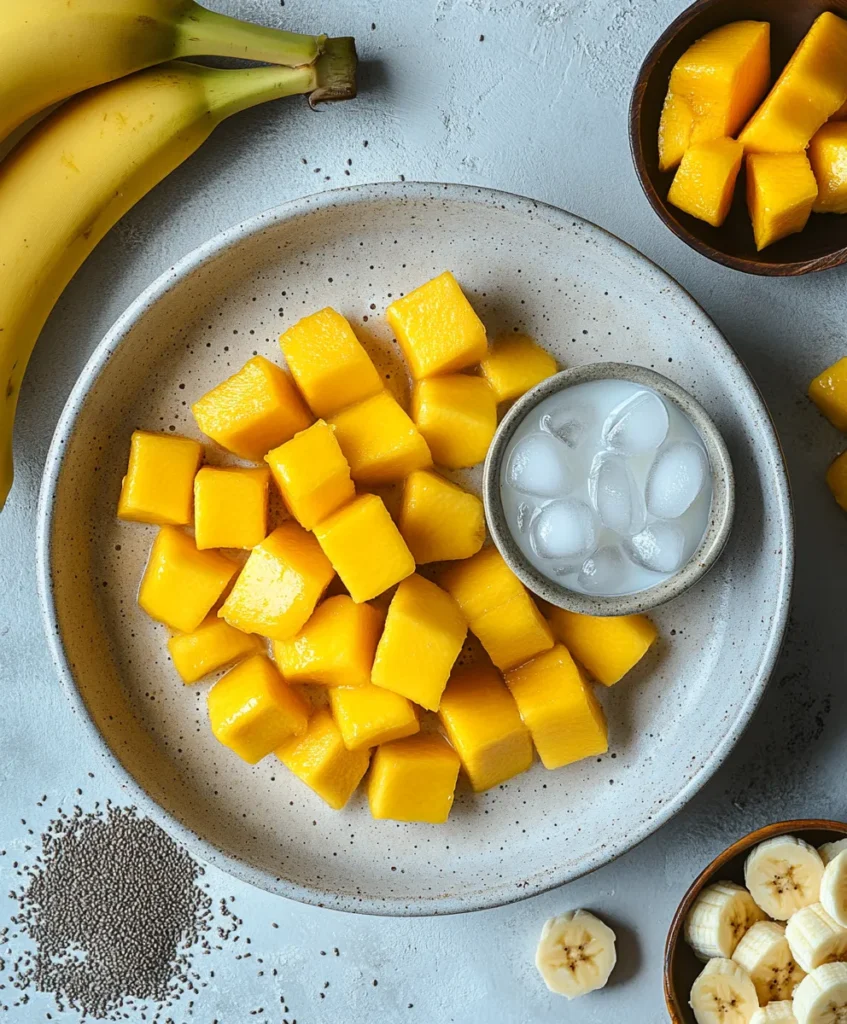
Crafting the perfect mango smoothie recipe begins with selecting the best ingredients. Every element plays a role in shaping the flavor, texture, and nutritional value of your drink. Use the table below as a quick guide, followed by detailed tips to help you pick exactly what you need before blending.
| Ingredient | Why It’s Important | Pro Tip |
|---|---|---|
| Mango | The star of the show — provides tropical sweetness and creamy texture | Use ripe Ataulfo or Alphonso mangoes for the sweetest, most vibrant flavor |
| Liquid Base | Controls consistency and creaminess | Start with ¾ cup and adjust for thickness |
| Creaminess Boosters | Add body and smooth texture | Try banana, avocado, or Greek yogurt |
| Sweetener (Optional) | Enhances natural flavors | Honey, maple syrup, or agave for a subtle lift |
| Flavor Enhancers | Layers of taste | Lime juice, vanilla extract, or a pinch of cinnamon |
| Ice | Chill factor for refreshing sips | Use frozen mango instead to skip dilution |
Fresh vs Frozen Mango – Which Gives Better Results?
- Fresh mango delivers the juiciest flavor and smoothest blend when perfectly ripe.
- Frozen mango is a game-changer for convenience — it skips peeling and chopping, plus doubles as your ice to keep smoothies thick and frosty.
SEO Tip: If you want a smoothie that holds up for Instagram photos or stays cold longer, go for frozen mango chunks.
Optional Add-Ins for Extra Creaminess and Nutrition
You can elevate a mango smoothie with nutrient-dense additions without overpowering its tropical vibe:
- Protein Boost: Vanilla protein powder or plain Greek yogurt
- Healthy Fats: Chia seeds, flaxseeds, or almond butter
- Superfoods: Turmeric for anti-inflammatory benefits, or spinach for hidden greens
- Spices: Ginger for zing, cardamom for a hint of exotic warmth
Pro move: Blend your smoothie in stages — first the liquid and soft fruits, then frozen items — to ensure a silky finish.
Step-by-Step Instructions for the Silkiest Mango Smoothie
Making the perfect mango smoothie recipe isn’t just about tossing ingredients into a blender — it’s about layering, timing, and blending smart. Here’s your foolproof process:
| Step | Action | Pro Tip for Perfection |
|---|---|---|
| 1 | Add liquid base to blender | Prevents blades from sticking and ensures a smooth start |
| 2 | Add fresh or frozen mango chunks | For a stronger tropical punch, use ripe Ataulfo or Alphonso mango |
| 3 | Add creaminess boosters (banana, yogurt, etc.) | Layer on top of mango to blend evenly |
| 4 | Add sweetener or flavor enhancers | Adjust to taste — start small, you can always add more |
| 5 | Add ice (only if using fresh mango) | Skip ice if using frozen mango to avoid watering it down |
| 6 | Blend on high for 45–60 seconds | Pulse first to break up chunks, then blend until silky |
| 7 | Taste and adjust | Add more liquid for a thinner smoothie or more fruit for thickness |
Prepping Mango and Other Ingredients
- Fresh mango: Peel with a vegetable peeler, slice off cheeks, and cut into chunks.
- Frozen mango: No prep needed — just measure and add directly to blender.
- Wash all add-ins (like spinach or herbs) before tossing them in.
Blending Tips for a Smooth, Lump-Free Texture
- Start slow: Pulse for 10 seconds to break down big chunks.
- Blend high: Run the blender on high for at least 45 seconds for a creamier finish.
- Use a tamper: Push ingredients toward the blades without stopping the blender.
- Add liquid gradually: Too much at once can make the smoothie thin and watery.
Choosing the Best Liquid Base – Milk, Water, or Juice?
The liquid you choose for your mango smoothie recipe shapes the flavor, texture, and nutrition. Pick the right one, and your smoothie can go from good to unforgettable.
| Liquid Base | Flavor Profile | Texture | Best For |
|---|---|---|---|
| Whole or Low-Fat Milk | Creamy, neutral flavor | Thick and rich | Classic milkshake-style smoothies |
| Almond Milk | Light, nutty taste | Smooth and slightly thinner | Dairy-free, low-calorie options |
| Coconut Milk | Tropical and sweet | Thick, velvety | Tropical blends with pineapple or banana |
| Oat Milk | Mild, slightly sweet | Medium-thick | Vegan smoothies with a smooth finish |
| Water | Neutral | Light | Calorie-conscious or extra-hydrating smoothies |
| Orange Juice | Bright, citrusy kick | Light to medium | Morning smoothies with a tangy twist |
How Different Liquids Affect Taste and Texture
- Milk & coconut milk give a rich, dessert-like creaminess.
- Plant-based milks like almond or oat keep it light but still smooth.
- Juices add brightness but can make smoothies thinner — great for breakfast blends.
- Water is perfect for hydration but won’t mask mango’s natural flavor.
Dairy-Free and Plant-Based Options
If you want a vegan mango smoothie, skip the dairy and try:
- Almond milk for a nutty undertone
- Coconut milk for tropical richness
- Oat milk for a neutral, creamy base
Pro tip: Blend with frozen mango when using lighter liquids to keep your smoothie thick without adding dairy.
The Best Fruit Pairings for Mango Smoothies
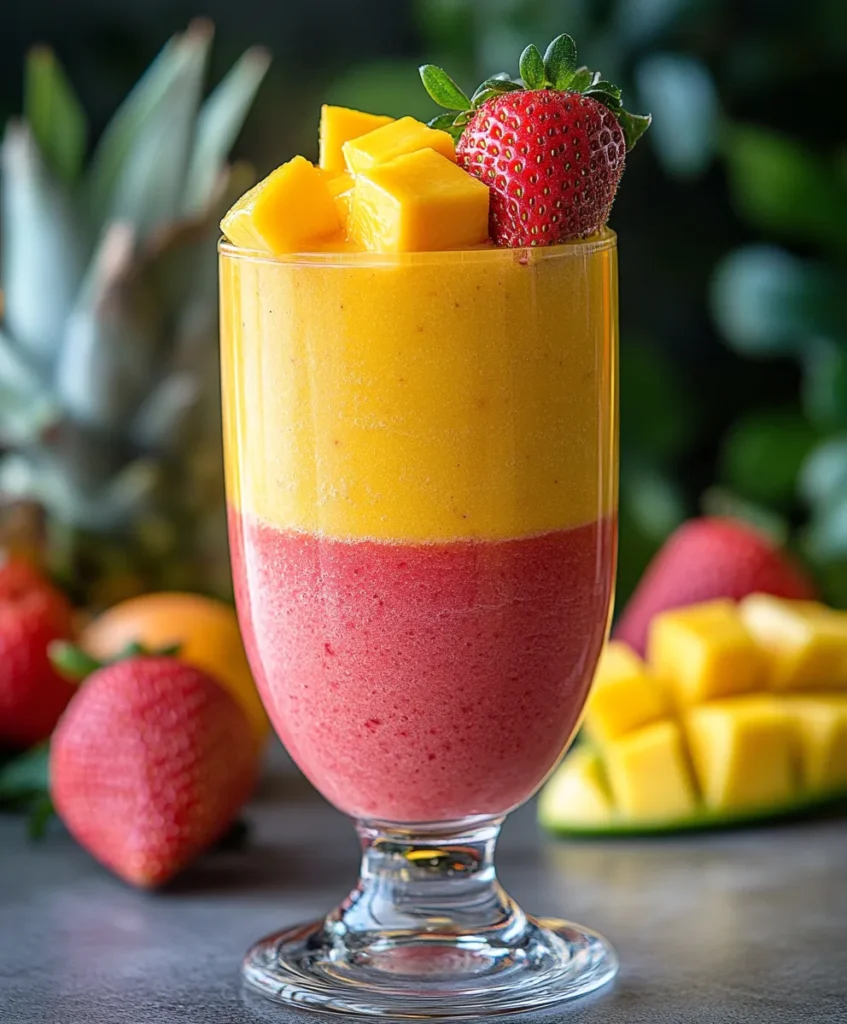
Pairing mango with the right fruits can turn a simple smoothie into a tropical masterpiece. These combinations boost flavor complexity, add natural sweetness, and increase nutrition.
| Fruit Pairing | Flavor Effect | Why It Works Best |
|---|---|---|
| Pineapple | Tangy and tropical | Balances mango’s sweetness with bright acidity |
| Banana | Smooth and mellow | Adds creaminess and natural thickness |
| Coconut | Rich and exotic | Complements mango’s tropical profile |
| Strawberry | Sweet-tart contrast | Adds freshness and vitamin C boost |
| Peach | Soft and juicy | Creates a summer fruit blend |
| Papaya | Mildly sweet and soft | Enhances tropical feel without overpowering mango |
Tropical Blends: Pineapple, Banana, and Coconut
The mango + pineapple + banana combo is a classic for a reason — it’s creamy, sweet, and has just enough tang to keep things refreshing. Toss in a splash of coconut milk, and you’ve got a smoothie that tastes like a beach vacation in a glass.
Surprising Combos That Work Beautifully
- Mango + Strawberry + Mint – Fresh, cooling, and perfect for summer
- Mango + Peach + Vanilla – Dessert-like, especially with oat milk
- Mango + Papaya + Lime – A tropical punch with a zesty finish
Fruits You Shouldn’t Mix with Mango in a Smoothie
While mango pairs beautifully with many fruits, there are some combinations that can clash in flavor or reduce nutrient absorption. Choosing the right partners ensures your mango smoothie recipe stays delicious and healthful.
| Fruit | Why to Avoid | Better Alternative |
|---|---|---|
| Watermelon | High water content thins the smoothie and dilutes mango flavor | Try cantaloupe or honeydew for similar mild sweetness |
| Orange + Dairy | Can cause curdling when blended with milk or yogurt | Use orange juice with plant-based milk or water |
| Kiwifruit | Strong tartness can overpower mango’s natural sweetness | Swap for green grapes or strawberries |
| Grapefruit | Intense bitterness may dominate the blend | Use tangerine or mandarin for a gentler citrus note |
Avoiding Flavor Clashes
Fruits with high acidity (like grapefruit) or extremely mild water-heavy fruits (like watermelon) can make your smoothie less satisfying. Instead, pick fruits with balanced sweetness or creaminess to let mango shine.
Nutrient Interaction Concerns
Some fruits may affect how your body absorbs certain vitamins from mango. For example, high-acid fruits can alter the pH of your smoothie, which may impact the absorption of vitamin C or calcium. While this isn’t harmful in small amounts, it’s worth considering if you’re blending for nutritional benefits.
Health Benefits of Mango Smoothies
A well-made mango smoothie recipe is more than just a refreshing treat — it’s a nutrient-packed drink that supports overall health. Mangoes are loaded with vitamins, minerals, and antioxidants that can boost your energy and well-being.
| Health Benefit | Nutrient Source | How It Helps |
|---|---|---|
| Boosts Immunity | Vitamin C, Vitamin A | Supports immune cell function and fights infections |
| Promotes Healthy Skin | Beta-carotene, Vitamin E | Encourages collagen production and protects against sun damage |
| Supports Digestion | Dietary fiber, enzymes like amylase | Helps break down carbohydrates and maintain regularity |
| Aids Eye Health | Lutein, zeaxanthin | Protects against age-related macular degeneration |
| Energy Boost | Natural sugars, B vitamins | Provides quick fuel without artificial stimulants |
Vitamins, Minerals, and Antioxidants in Mango
One cup of mango delivers over 60% of your daily vitamin C needs, plus vitamin A, folate, potassium, and magnesium. It’s also rich in antioxidants like mangiferin, which help fight free radicals and inflammation.
How Mango Supports Digestion, Skin, and Immunity
- Digestion: Mango contains amylase, an enzyme that helps break down carbs for easier absorption.
- Skin: Beta-carotene and vitamin E promote healthy, glowing skin.
- Immunity: High vitamin C levels strengthen your body’s defenses, making it a great choice during cold and flu season.
Pro tip: For an even healthier boost, blend your mango smoothie with spinach or kale — you’ll get extra fiber and micronutrients without losing that sweet tropical flavor.
Layering Ingredients for a Perfect Blend
Layering your smoothie ingredients in the right order ensures the blender works efficiently, producing a silky texture without overworking the motor. It also prevents chunks and uneven blending.
| Layer Order | Ingredient Type | Why It Matters |
|---|---|---|
| Bottom (nearest blades) | Liquids (milk, juice, water) | Helps blades move freely from the start |
| Second Layer | Soft ingredients (fresh mango, banana, yogurt) | Blends smoothly and evenly |
| Third Layer | Hard or frozen items (frozen mango, berries, ice) | Keeps the smoothie thick and cold |
| Top Layer | Seeds, powders, leafy greens | Prevents them from clumping at the bottom |
The Ideal Layering Order for Blending
Always start with liquids, then soft ingredients, followed by frozen or harder items. This creates a blending vortex that pulls everything down into the blades, producing a smooth, lump-free drink.
Tips for Layered Smoothie Art
If you want your mango smoothie recipe to look as good as it tastes:
- Blend each fruit separately with a small amount of liquid
- Pour layers slowly into the glass to avoid mixing
- Use a spoon to create swirl patterns between colors
- Garnish with fresh fruit slices or shredded coconut for visual appeal
Pro move: Serve in a clear glass to show off those beautiful mango layers — perfect for Instagram and Pinterest shares.
Serving and Storing Mango Smoothies
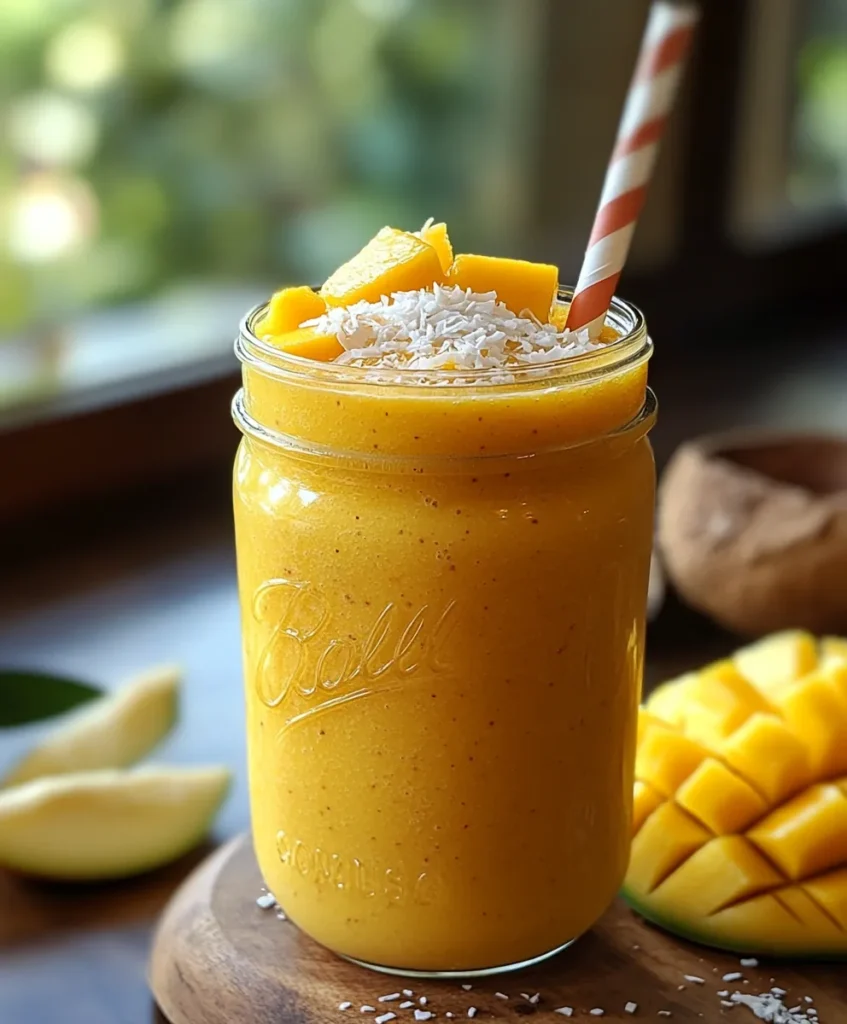
Serving your mango smoothie recipe the right way not only makes it more enjoyable but also keeps it tasting fresh. Whether you’re sipping immediately or saving some for later, a few small tweaks can make a big difference.
| Step | Serving Tip | Storage Tip |
|---|---|---|
| 1 | Use a chilled glass to keep it cold longer | Store in an airtight jar or bottle |
| 2 | Garnish with fresh mango cubes, mint, or shredded coconut | Keep refrigerated for up to 24 hours |
| 3 | Pair with a light breakfast like Vegetarian Stuffed Bell Peppers for a balanced meal | Shake or stir before drinking to redistribute ingredients |
| 4 | Serve with a reusable straw for a sustainable touch | Freeze in popsicle molds for a frozen treat |
Best Glasses, Garnishes, and Presentation Tips
- Tall, clear smoothie glasses showcase the bright, golden hue of the drink beautifully.
- Mason jars are great for a rustic, Instagram-worthy vibe.
- Garnish with contrasting colors — a green mint sprig or bright berries make the drink pop.
How to Store Leftovers Without Losing Freshness
If you’ve made extra:
- Pour immediately into an airtight container to prevent oxidation.
- Keep in the coldest part of your fridge (not the door) for up to 24 hours.
- If separation occurs, give it a good stir or quick blend before drinking.
Pro tip: For long-term storage, freeze smoothie portions in ice cube trays. When ready to enjoy, simply re-blend with a splash of fresh liquid.
FAQs About Mango Smoothies
What are the ingredients for a mango smoothie recipe?
A classic mango smoothie recipe includes ripe mango (fresh or frozen), a liquid base like milk, almond milk, or juice, and optional creaminess boosters like banana or yogurt. You can also add sweeteners, seeds, or spices to customize the flavor.
What fruit blends well with mango?
Mango pairs beautifully with tropical fruits like pineapple, banana, and coconut, as well as berries like strawberries for a sweet-tart contrast.
Do you put water or milk in a mango smoothie?
Either works, but milk (dairy or plant-based) gives a creamier texture, while water keeps it light and hydrating. Coconut milk is a great choice for a tropical twist.
What fruits should not be mixed together in a smoothie?
Avoid mixing mango with watermelon (too watery), grapefruit (too bitter), or high-acid fruits like kiwi with dairy bases, as they may curdle.
Is mango healthy in a smoothie?
Yes! Mango is packed with vitamin C, vitamin A, antioxidants, and fiber, supporting immunity, skin health, and digestion.
What ingredients do you layer in a smoothie?
Start with liquids at the bottom, then soft fruits, followed by frozen fruits or ice, and finally seeds, powders, or leafy greens on top for even blending.
Conclusion – Sip Your Way to Tropical Bliss
A mango smoothie recipe is one of the simplest ways to bring tropical sunshine into your day. With just a few fresh ingredients, the right blending technique, and thoughtful pairings, you can create a drink that’s as nourishing as it is delicious. Whether you keep it classic with mango and banana or get adventurous with pineapple and coconut, the possibilities are endless.
So grab your blender, pick your favorite liquid base, and start experimenting with flavors until you find your signature mango blend.
If you’re ready to explore more refreshing drinks, discover our energizing Blackberry Sage Lemonade Refresher for another vibrant addition to your kitchen rotation.

Mango Smoothie Recipe
Ingredients
Equipment
Method
- Add coconut milk to the blender.
- Add mango chunks, banana, and optional sweetener.
- If using fresh mango, add ice cubes.
- Blend on high until smooth and creamy.
- Taste and adjust sweetness or thickness, then serve immediately.
Notes
- For a vegan version, use maple syrup or skip sweetener.
- Swap banana for avocado to make it creamier without extra sweetness.
- Frozen mango makes the smoothie extra thick and eliminates the need for ice.


